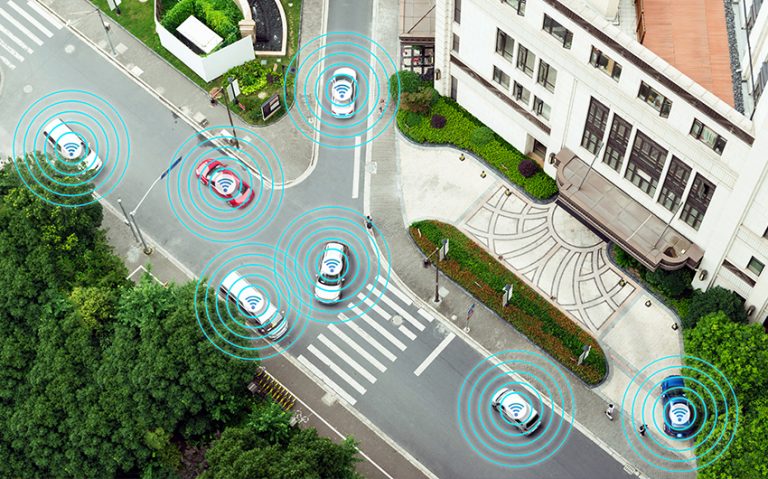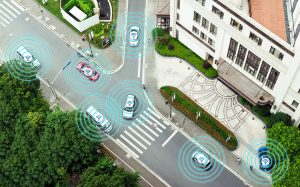The best automotive infotainment unit is the one in my pocket
- A car maker with a future is a car maker that realises how vital its data is and pays the buyers of its vehicles for the right to use it.
- This also has the added benefit of creating a relationship with the buyer of the vehicle which is something car companies have not really bothered with to date.
- The latest survey from IHS examines the technology that consumers are and are not willing to pay for when they buy a new vehicle (see here).
- The data shows that consumers across the world are most willing to pay for a sunroof and rear seat entertainment systems with things like telematics and in-car Wi-Fi trailing significantly.
- The survey also revealed that consumers expect technology in vehicles to evolve as quickly as it does in mobile devices.
- This creates an enormous problem for an industry with a 4 to 5 year design cycle where even the top end infotainment systems costing thousands of dollars are using hardware that is 5 years out of date.
- The result is that they can be outperformed by a $150 Android device.
- This means that the user is likely to have a better digital experience in a top of the range vehicle with a cheap smartphone rather than with the infotainment unit.
- This strongly encourages the user to access his Digital Life with his smartphone in the vehicle rather than to use the infotainment unit.
- This is the last thing every car maker needs.
- Users still buy cars based on performance, form factor, safety and economy but increasingly digital services will play a part in the user’s decision of which car he buys.
- If the infotainment unit is not being used and everything is being done on a smartphone then the digital battle will have already been lost and cars will have moved closer to being commodities.
- Furthermore, I think that the automotive industry has its strategy with regard to telematics completely back to front.
- Instead of forcing users to pay for telematics, they should be giving users a discount or free services for agreeing to grant access to the data that these systems generate.
- Using digital ecosystems as a benchmark, I think that car companies could give users meaningful discounts on the price of the vehicle and still end up with higher revenues and margins.
- This is because the data that these vehicles generate could be very valuable to other companies who provide services based on collecting data.
- For example, using cars as weather or traffic probes would cut down on the need to install expensive infrastructure.
- However, to be valuable, all cars need to be generating this data and while car makers continue to charge users for this feature, penetration will remain low leaving the door open for disruptors.
- One only has to delve very briefly into the world of start-ups to see this disruption coming.
- For example, many start-ups are providing their automotive related digital services on smartphones and not infotainment units and there is significant development of technology that could by-pass the car companies entirely.
- For example, a quick tour of the automotive section of a technology trade show revealed two companies that use vibration to work out exactly what is happening within the vehicle rather than use the traditional sensors.
- One of these claimed that it could, using 10 vibration sensors on a helicopter, completely replace the 160 sensors currently being used.
- This data could easily be relayed to a smartphone app and cut the car companies out from the only data source which remains proprietary to them.
- I found these start-ups on the stands of the very companies which they intend to disrupt, further reinforcing my opinion that most of the automotive industry still has its head in the sand.
- Instead automakers should be aggressively moving to obviate the reason to be bypassed by making their infotainment units and sensor data easy to use and readily available with simple APIs.
- Currently, by far the best infotainment unit I have is the one that is in my pocket which is further enhanced because I can use it in any vehicle (including trains and planes).
- While, this reality persists, the automotive industry remains a sitting duck for the ecosystem companies who have long understood the value of that which the car industry seems to ignore.
- RFM would like to acknowledge John Ellis of Ellis and Associates which was the starting point for some of the views presented here (see here).









Blog Comments
Victor
June 22, 2017 at 7:50 am
“This means that the user is likely to have a better digital experience in a top of the range vehicle with a cheap smartphone rather than with the infotainment unit.”
This is precisely the point of Android Auto and Apple CarPlay – that the OEM car manufacturer infotainment system has a horrible interface, and is years out of date. When equipped with a system that supports either AA or CarPlay, it acts as the primary screen using the smartphone as the computer. Car infotainment is as up to date as the user’s connected phone.
Neither of these would ever have been developed, had car makers not fumbled so badly.
“The result is that they can be outperformed by a $150 Android device.”
The benefit of running the smartphone connected to CarPlay or Android Auto is that you get a car appropriate interface, handsfree, at the dashboard rather than on the small screen. It’s run by voice, rather than tapping on the small screen. Android Auto solves for this when you don’t have the headunit in dash by showing a large car appropriate display on the phone and locking out much of keyboard use. In iOS11, Apple blanks the screen and pushes everything through CarPlay. (passengers can unlock the display if they wish.)
Almost all of the features mentioned in the survey, traffic, infotainment, weather alerts, and so on – are already in the $150 Android smartphone’s reach. The user is STILL better using that, in terms of deciding who gets their data.
When it comes to technology in car, it’s not optional, and certainly not options expected to be paid for – the consumer expects it comes standard.
When it comes to communications, the FCC determined that AT&T couldn’t give subscribers discounted service on the premise that AT&T would snoop their traffic and data in order to give targeted adverts. Those FCC rules have since been rolled back, but as a car manufacturer, you wouldn’t want to be out the discount if the pendulum swung back again; you’d want to charge regular pricing AND sell the data.
windsorr
June 23, 2017 at 12:03 pm
I think you are right in that if the car makers haddone a better job of the MMI there would be no CarPlay or Android Auto.
However, I think that they too have a poor user experience. The use case in the car is different and I dont think that a touch based Icon grid cuts it.. something else is needed probably involvng voice somehow.
Victor
June 23, 2017 at 2:26 pm
This response from you makes me suspect you haven’t used CarPlay or Android Auto. Get both and drive for a week.
AA is not grid-based. It’s got one strip to toggle views (maps, phone, home, music) and voice input in the upper right. Home is sort of an android notifications screen with the next nav instruction writ large, and incoming messages notifications below it.
CarPlay is grid-based, but in practice you don’t touch it more than once a drive (to set the music source) – a heat map would show that you use three icons on the side strip to toggle between maps, music or messages/phone, or the top of screen for notifications. You don’t need to do this, because maps directions are still read aloud when off the maps view, and any messages come in as notifications read aloud. In both cases, they’re strongly voice-driven. Especially if you map the Siri button to a steering wheel button at time of install as OEMs have done.
I’ve had the Alpine, Kenwood and Pioneer units of each (Alpine’s are CarPlay only, where the others are dual systems) and in all cases, interaction with the touch interface is either on par with OEM infotainment or much reduced – some of it comes down to user, but the designers of these systems clearly set out to reduce the need for touch input.
They’re voice driven, and the best in-car experiences we’ve seen yet. Ford is set to put Amazon Alexa in car, but we don’t really know how that will work out – so far, Alexa has been pretty good at music, but how it will fare for nav and notifications remains to be seen.
Victor
June 23, 2017 at 2:38 pm
The other great thing about AA and CarPlay is this:
Car mfrs rarely update anything, unless the house is on fire. If the car can be hacked remotely, you might get an update.
By divorcing infotainment from being locked in the headunit to being run by the phone with the headunit as a remote display and touch input, every time the phone gets an update, the infotainment system gets improved. This is huge. And it happens because car mfrs were on a four to ten year cycle, and tech changes much more quickly than that.